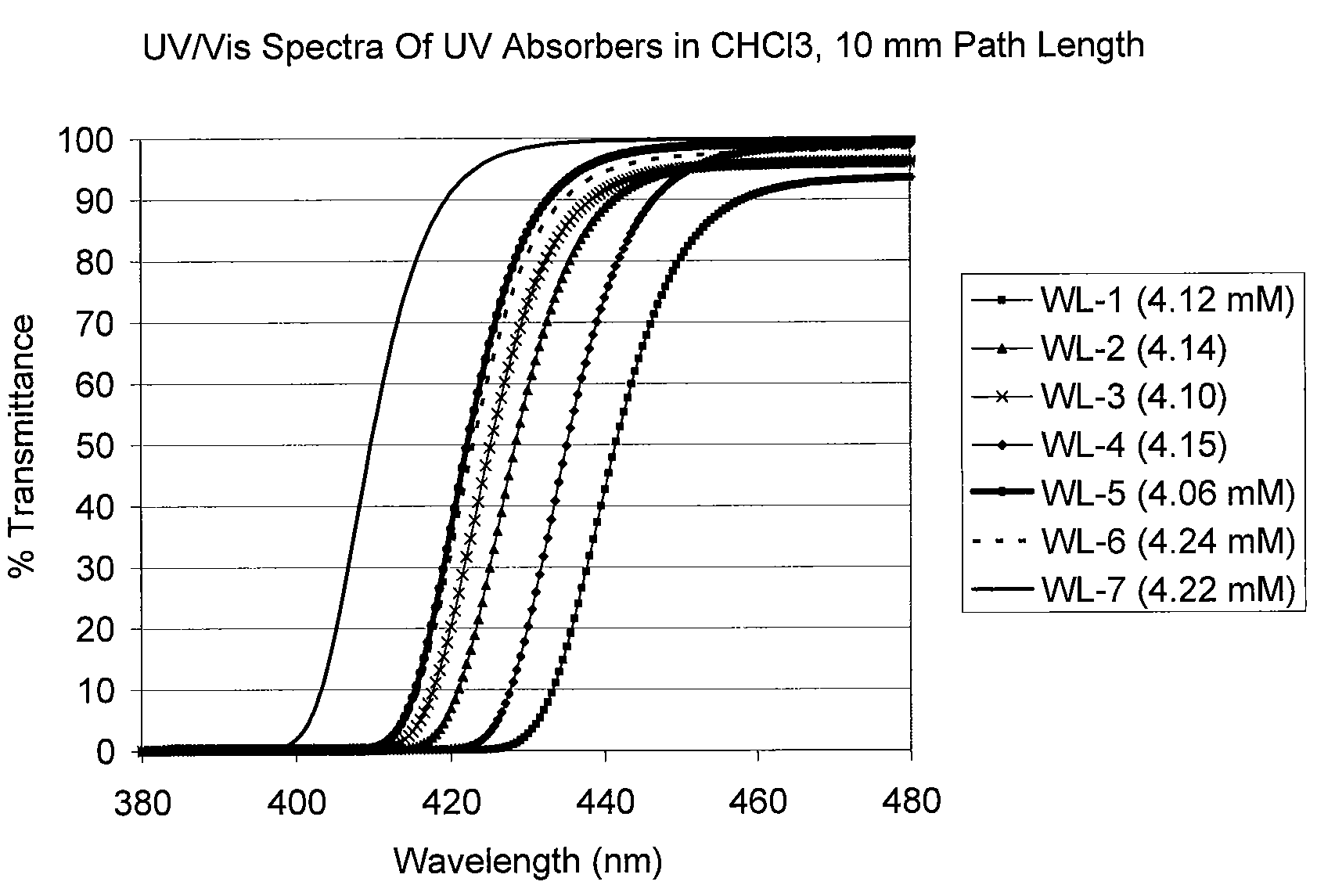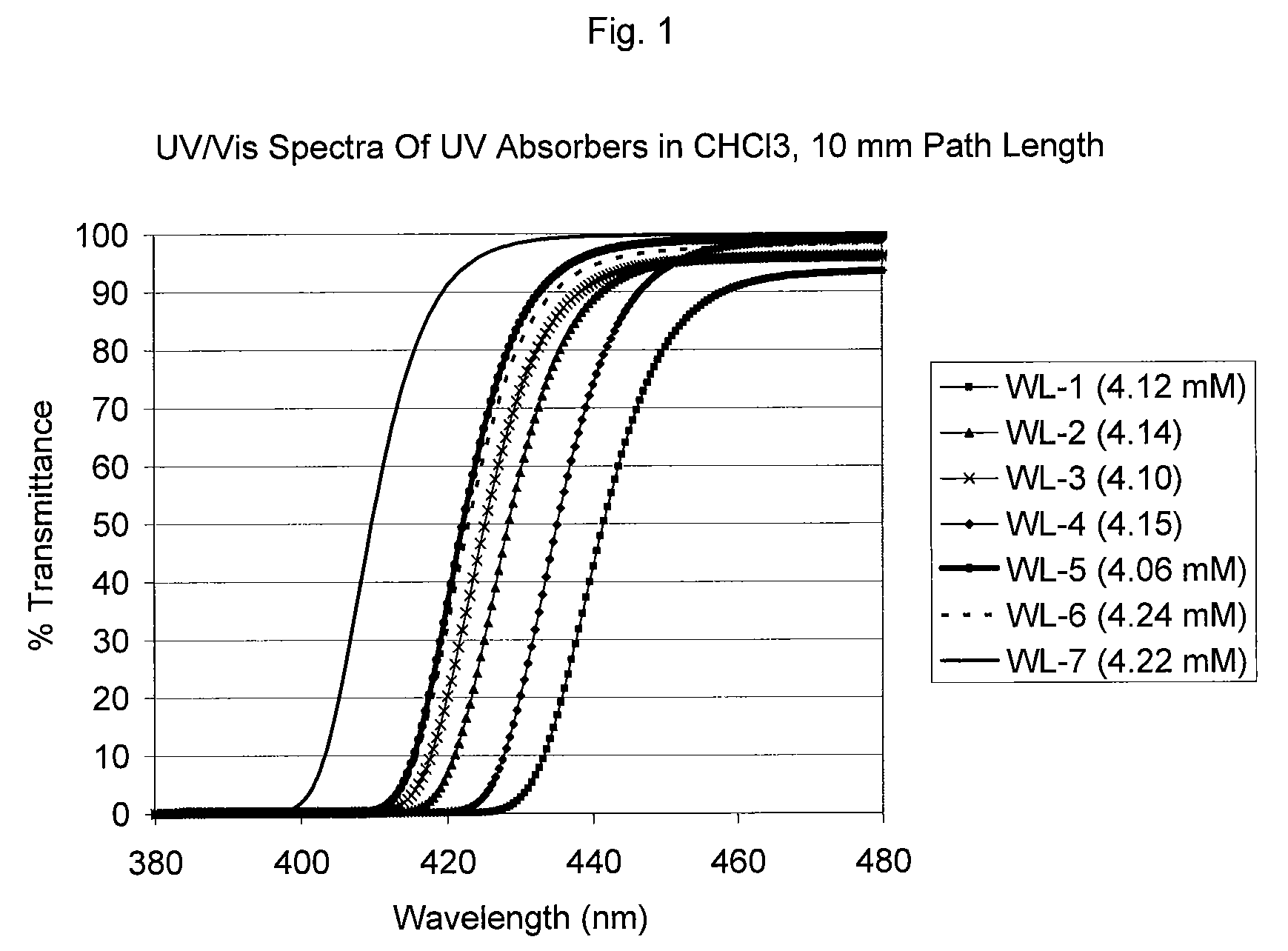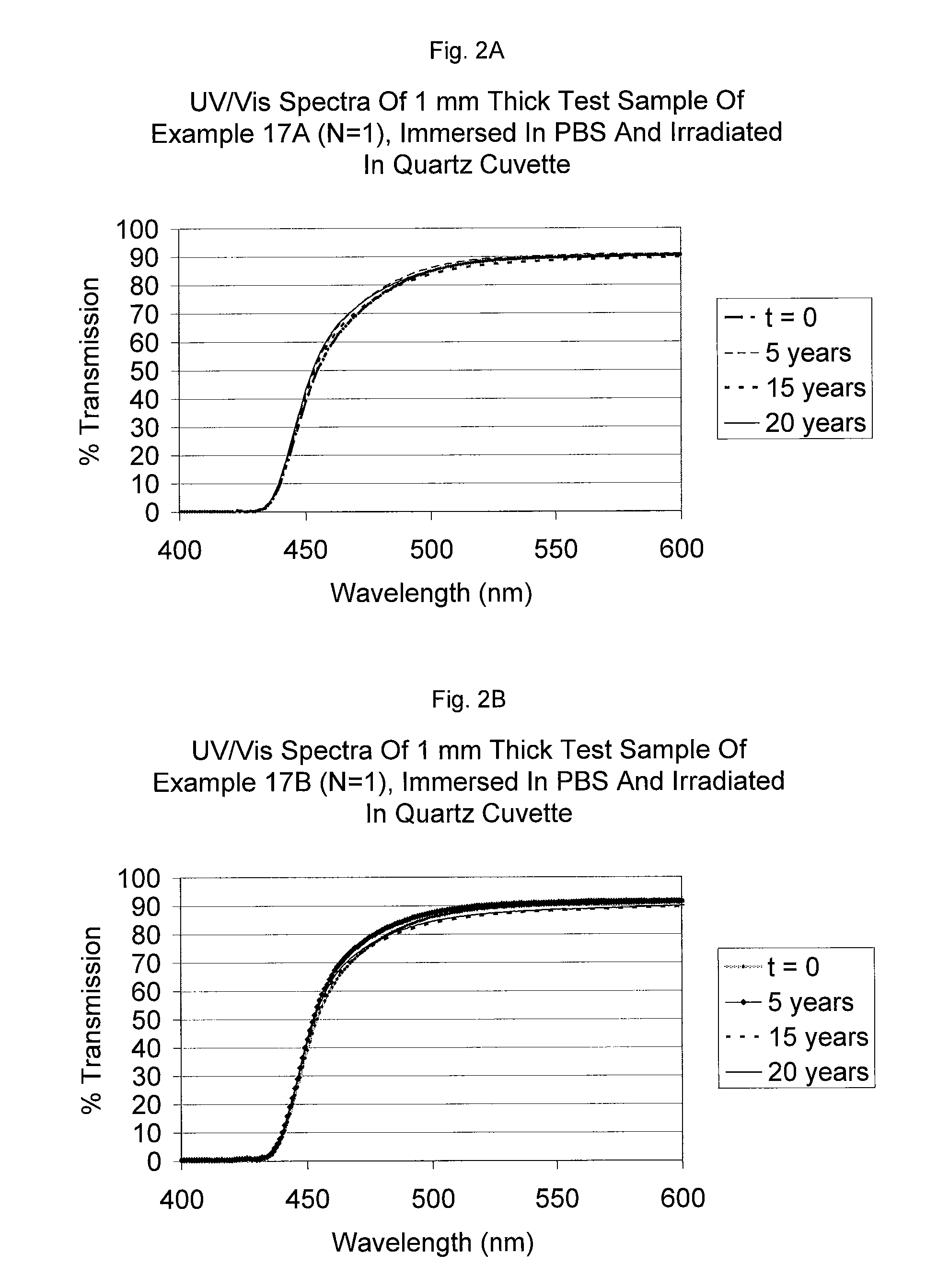UV/visible light absorbers for ophthalmic lens materials
a technology of ophthalmic lens materials and ultraviolet light, applied in the field of ultraviolet/visible light absorbers, can solve the problems of loss of ultraviolet/visible blocking activity in the implant, and the loss of optical clarity of the lens
- Summary
- Abstract
- Description
- Claims
- Application Information
AI Technical Summary
Benefits of technology
Problems solved by technology
Method used
Image
Examples
example 1
[0056]Synthesis of (2-hydroxy-5-methoxy-1,3-phenylene)-dimethanol. In a 2 liter reaction flask equipped with magnetic stirrer was suspended 200 g p-methoxyphenol in 1300 ml water. Formaldehyde solution (335 ml, 37% in water) was added to the stirring solution followed by 55.8 g calcium oxide. The reaction mixture was covered in aluminum foil and allowed to stand at ambient temperature for 10 days. The solid was filtered and then suspended in 1 L deionized water. 130 ml glacial acetic acid was added to the stirring suspension at ambient temperature. The off-white solid was filtered, rinsed with hexane, and then dried under high vacuum for 72 hours to afford 118.9 g (37.8%). 1H NMR (DMF-d7) delta: 3.75 (s, 3H, OCH3), 4.73 (s, 4H, CH2O), 5.39 (bs, 2H, CH2OH), 6.85 (s, 2H, Ar—H). 13C NMR (DMF-d7) delta: 55.12 (1C, OCH3), 59.84 (2C, CH2OH), 111.18 (2C, Ar—CH), 129.51 (2C, Ar—CCH2), 146.30 (1C, Ar—COH), 152.95 (1C, Ar—COCH3).
[0057]
example 2
[0058]Synthesis of 2-(hydroxymethyl)-4-methoxy-6-((2-nitro-4-(trifluoro-methyl)-phenyl)diazenyl)-phenol. In a 500 ml round bottom flask equipped with a magnetic stirrer was added 19.9 g 2-nitro-4-(trifluoromethyl)-aniline (96.5 mmol) (Aldrich, Milwaukee, Wis.), 41 ml concentrated HCl (aq), 100 ml deionized water, 100 ml ethanol, and 80 ml THF. The suspension was stirred for 30 minutes and 7.07 g sodium nitrite (102 mmol) in 30 ml water was added dropwise over 60 minutes while keeping the reaction mixture at 0° C. The reaction mixture was stirred for an additional 1 hour. 300 mg Sulfamic acid was added to destroy excess nitrite. The mixture was filtered to remove undissolved solids. The filtered diazonium mixture along with a solution of sodium hydroxide (15.1 g in 100 ml water) were added dropwise to a solution containing 19.7 g (2-hydroxy-5-methoxy-1,3-phenylene)dimethanol (107 mmol), 4.3 sodium hydroxide, 200 ml deionized water, and 50 ml THF at 0° C. The reaction mixture was allo...
example 3
Compound WL-1
[0060]Synthesis of 2-hydroxy-5-methoxy-3-(5-(trifluoromethyl)-2H-benzo[d][1,2,3]triazol-2-yl)benzyl methacrylate. In a 250 ml round bottom flask equipped with a magnetic stirrer and nitrogen inlet was dissolved 1.15 g (3.39 mmol) 2-(hydroxymethyl)-4-methoxy-6-(5-(trifluoromethyl)-2H-benzo[d][1,2,3]triazol-2-yl)phenol in 50 ml anhydrous THF containing BHT inhibitor (Aldrich). Triethylamine (1.4 ml, 11 mmol) was added and the mixture was cooled to −10° C. Methacryloyl chloride (0.436 g, 4.17 mmol) was added dropwise and the mixture was stirred for 1 hr at −10° C. followed by 20 hours at ambient temperature. The solid was filtered and rinsed with 100 ml diethyl ether. The filtrate was poured into 100 ml diethyl ether and washed with 0.5 N HCl and water. The organic layer was dried with magnesium sulfate, filtered, and then concentrated via rotary evaporation to give the desired product as a dark yellow oil which was recrystallized in methanol to give 0.35 g product (25%). ...
PUM
| Property | Measurement | Unit |
|---|---|---|
| wavelengths | aaaaa | aaaaa |
| wavelengths | aaaaa | aaaaa |
| wavelengths | aaaaa | aaaaa |
Abstract
Description
Claims
Application Information
 Login to View More
Login to View More - R&D
- Intellectual Property
- Life Sciences
- Materials
- Tech Scout
- Unparalleled Data Quality
- Higher Quality Content
- 60% Fewer Hallucinations
Browse by: Latest US Patents, China's latest patents, Technical Efficacy Thesaurus, Application Domain, Technology Topic, Popular Technical Reports.
© 2025 PatSnap. All rights reserved.Legal|Privacy policy|Modern Slavery Act Transparency Statement|Sitemap|About US| Contact US: help@patsnap.com



